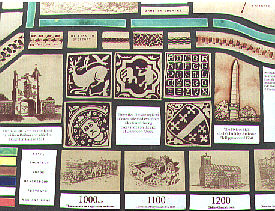
| Thorpe Acre used to be a hamlet on the route from Shepshed to Loughborough. The names of Thorpe Acre and Knightthorpe comes from the Danish "thorpe" meaning an outlying settlement and Acre (a recent corruption of the word hawker) from the place where hawking took place. Garendon derives from old English Gaerwald's dun, Hathern from Hawthorn, Dishley from Digoth's leah. A Leah is a wood or clearing in a wood, a dun is a settlement on rising ground. |  |
Until the mid-twentieth century Thorpe Acre comprised about twenty houses or cottages of which several still survive. It has a nineteenth century church, now extended and an old pub, The Plough Inn. Many of these are shown in old photographs collected or taken by the late Walter Leeson, a professional photographer, late of Carington Street, Loughborough.
These are four sets, or you can pick each one from the thumbnail views below.
 |
 |
 |
|||||
 |
|||||||
 |
 |
 |
 |
 |
 |
 |
|
 |
 |
 |
 |
After the war, in the 1950's Loughborough needed more housing and the Poet's area was created largely for employees of the Brush Engineering Works. In the sixties and early seventies Thorpe Acre was chosen for an entirely new esytate which has now almost consumed the old village. The village can still be identified, however, and the local shops on Wordsworth Road are called 'The Vill' by all the local children who use it. Many of these come from the towns two local secondary schools: Charnwood College and De Lisle RC College
The area lies on the boundary of Garendon Park, one of the greatest Leicestershire Deer Parks in the 18th Century.
[Thorpe Acre 2000] [Wildlife] [Mosaic]
[Village Sign]
[Sponsors]
[Village Sign
[Finger Posts]
[Health] [Cycleway
link] [Leaflet & audio] [Gala launch]
Last updated Sept 2020